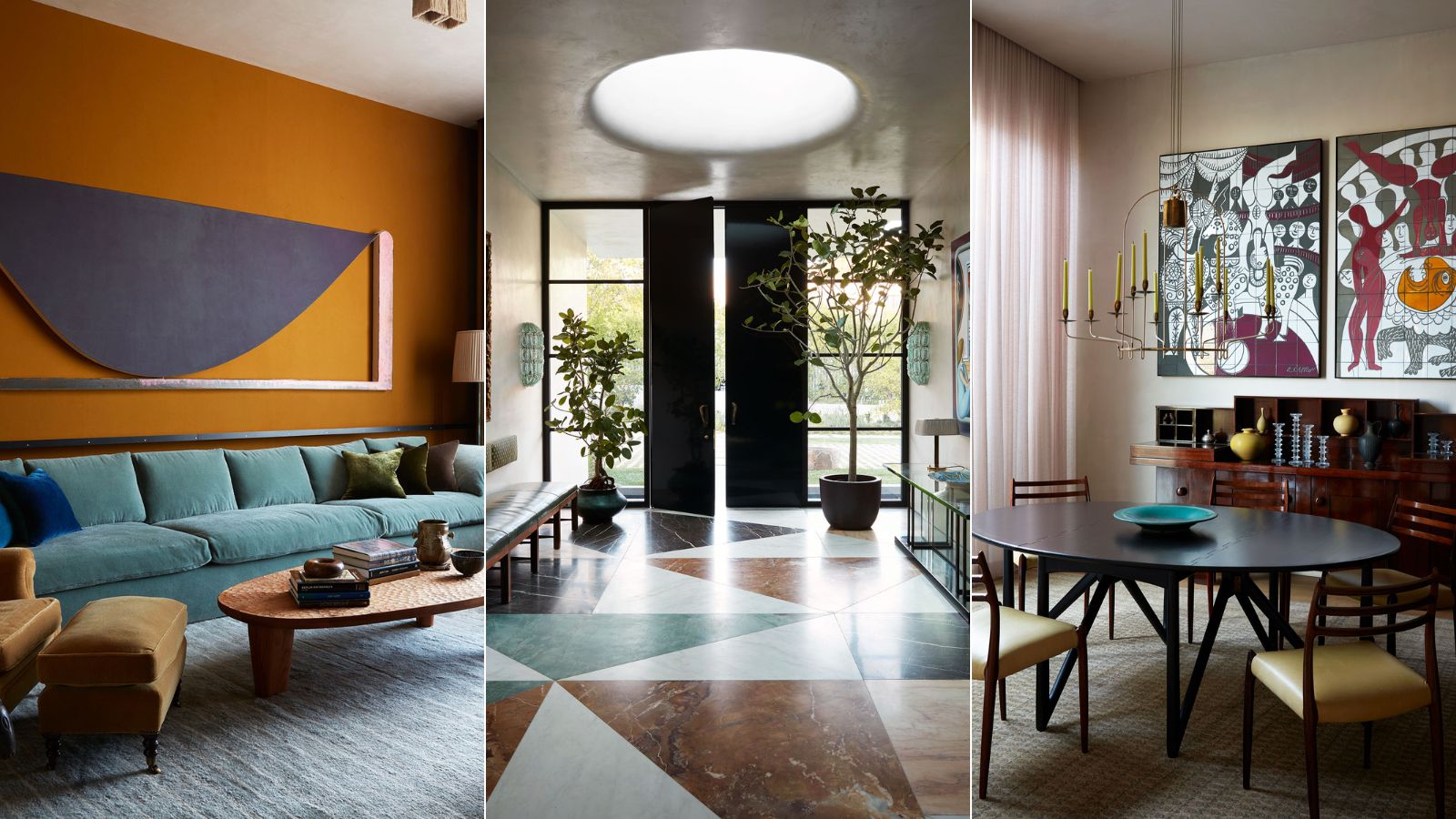
There are plenty of ways to combine styles from different decades without your space looking confused or mismatched. In fact, it is a design conundrum that everyone wants to solve. It is also an area in which the renowned Studio Shamshiri excels, and today Pamela Shamshiri is exclusively sharing her design know-how with us.
Considered California design royalty, designer Pamela Shamshiri is one of the world's most influential interior design forces in American design today. A founder of Commune Design and a set designer in earlier years, the Iranian-Italian founded the Studio Shamshiri with her brother Ramin in 2016 and has since designed homes for Paul McCartney and the actor Anne Hathaway, a flagship store for jeweler Irene Neuwirth, the Maison de la Luz hotel, and more.
Often described as a triple threat with a magnetic personality, Shashiri's layered, historically-informed work is widely known and revered for its ability to blend old and new with elegance and sensuality. 'The studio maintains a perspective that is highly collaborative and driven by responsibility and research – looking towards the future with support from the past, she says.
Below, Pamela Shamshiri of Studio Shamshiri shares a selection of her favorite interior design tips on combining modern and traditional elements at home.
How to mix traditional and modern design
Drawing on the sentiment of nostalgia and 1960s Italian design, Pamela Shamshiri believes that decor and furniture should possess a timeless, well-worn quality that evolves with the home. She places value on antiques, and heirlooms, and celebrates imperfections and patinas rather than masking them. These elements come together – along with contemporary finds – to create spaces that are individual, eclectic, and most importantly, liveable.
Pamela Shamshiri's talent is being noticed by industry-leading experts, too. 1stDibs, the leading online marketplace for extraordinary design, recently announced this year’s 1stDibs 50, the sixth iteration of the annual compendium of inspiring work by the world’s most talented interior designers and architects. As one of these 1st Dibs 50 2023 honourees, Studio Shamshiri is certainly one to keep an eye on for the future.
Here's why we are taking notice...
1. Revive an oudated color combination – and make it cool
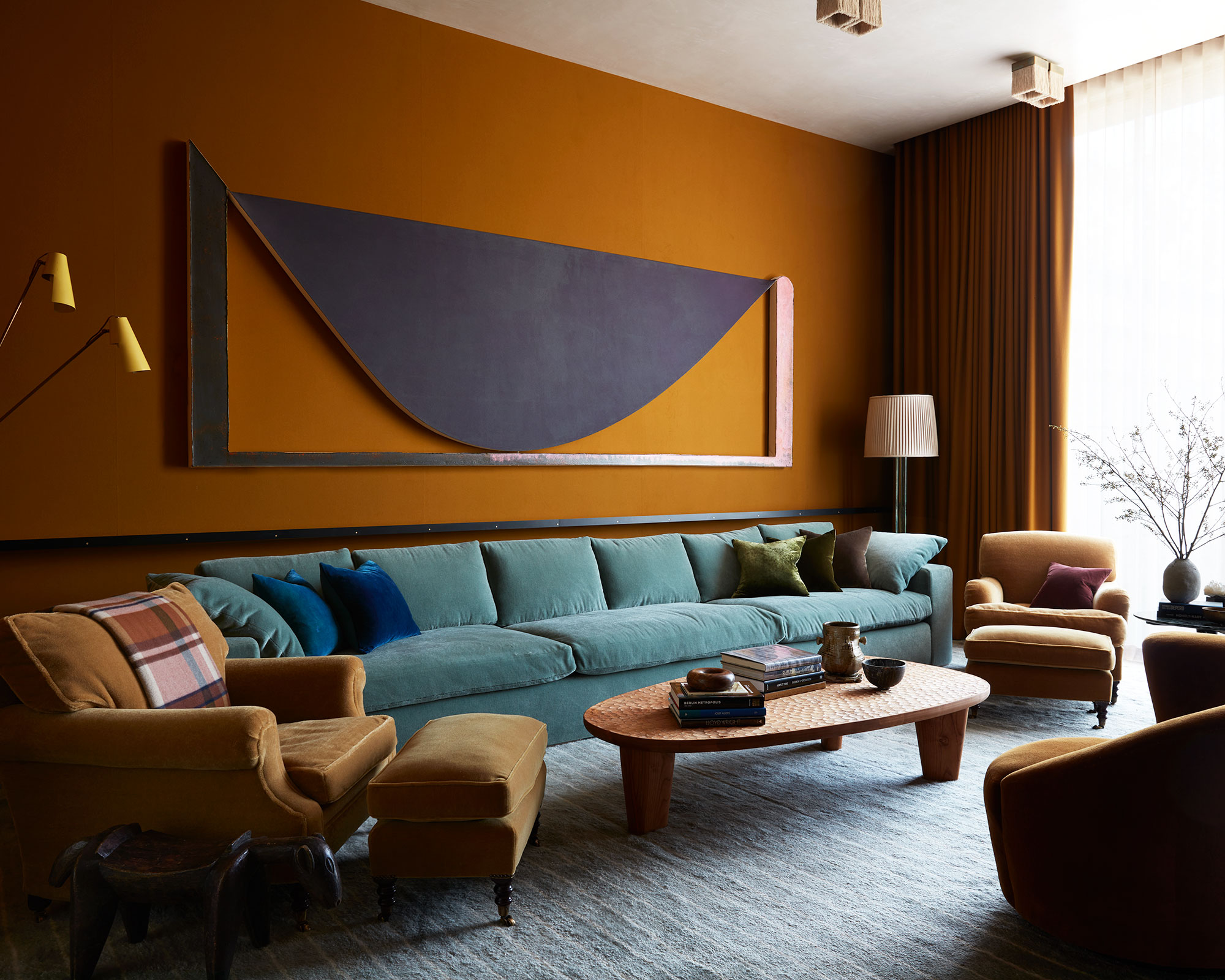
There is so much to admire about this living room, but it is the room's vintage color scheme that captured our attention.
Choosing complementary color combinations for rooms is an art form that Pamela Shamshiri has perfected here. ‘A classic yet enduring combination I love is denim blue with aged antique orange. These tones create rooms that appear effortless and stylish, embracing the trend for relaxed living,' says Shamshiri.
Orange is perhaps not a color people think about when designing a scheme – which is a shame as it can really stand out from, but also complement, a more neutral color scheme elsewhere, as we have here with this blue and gray palette.
Orange is also a great color for the creative mind. It inspires and energizes. However, if you'd rather not commit to a whole orange room, try color-blocking on one wall only.
2. Mix eras, colors and styles in true modern retro style
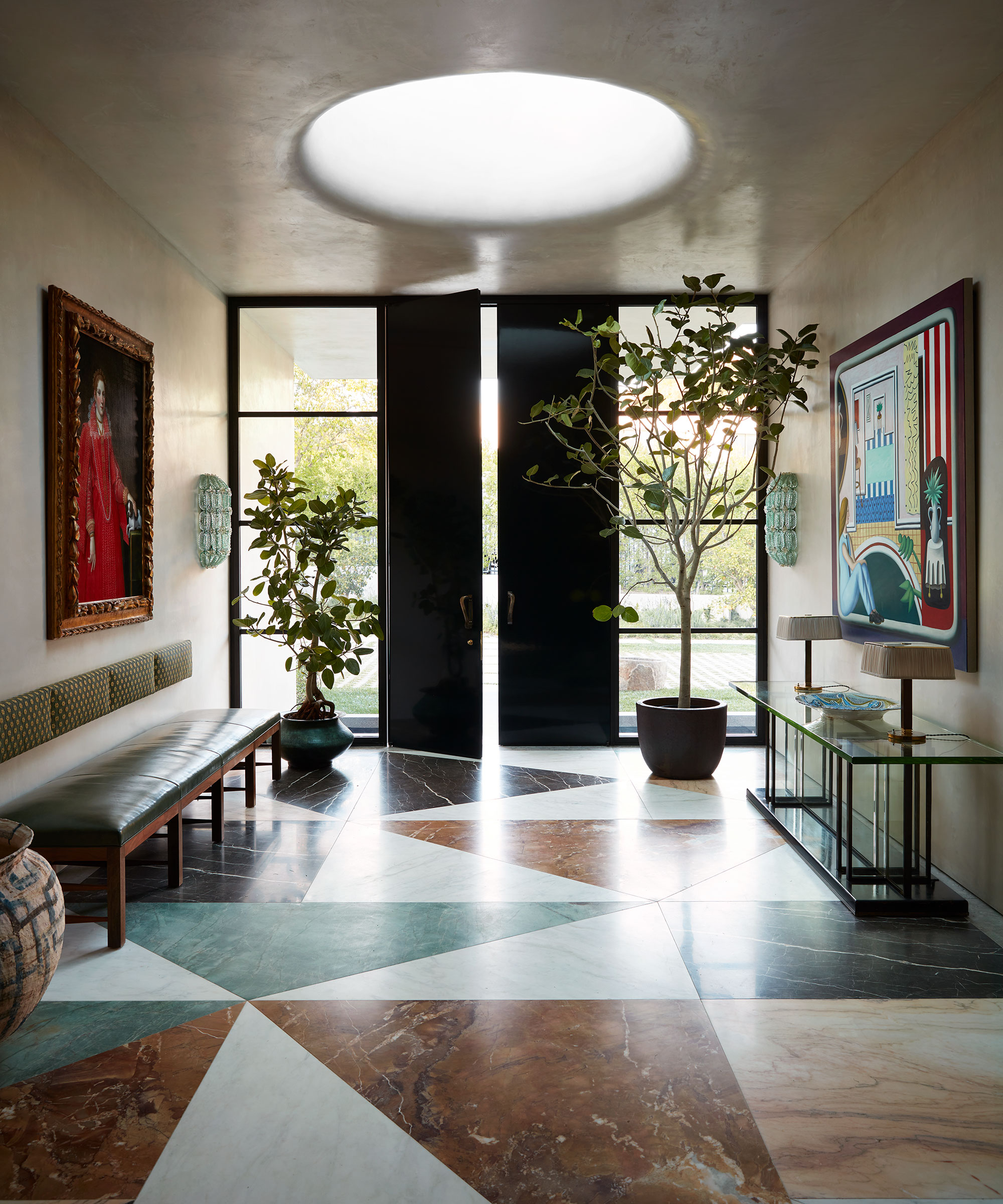
Celebrating a home's history while being firmly rooted in the now is a skill that not many have mastered. With history and provenance both current bywords, it's no surprise that a popular interior choice is modern-retro schemes that pay homage to recent design classics. Decorating with vintage furniture and pieces that have been passed down or sourced each tells a story of their era, and pairing them with contemporary detailing offers a fresh take.
Interiors schemes that give a nod to the past by referencing design classics, such as mid-century furniture, combined with modern aesthetics, including simple lighting and block color, offer an appealing sense of texture and interest.
'I start sourcing furniture early on in projects – and taking time to find the right pieces makes all the difference. I’m always looking for a balance between vintage and contemporary,' says Pamela Shamshiri. 'If I buy new seating maybe I’ll look for a vintage piece of art, so they offset one another.'
3. Let color be your guide
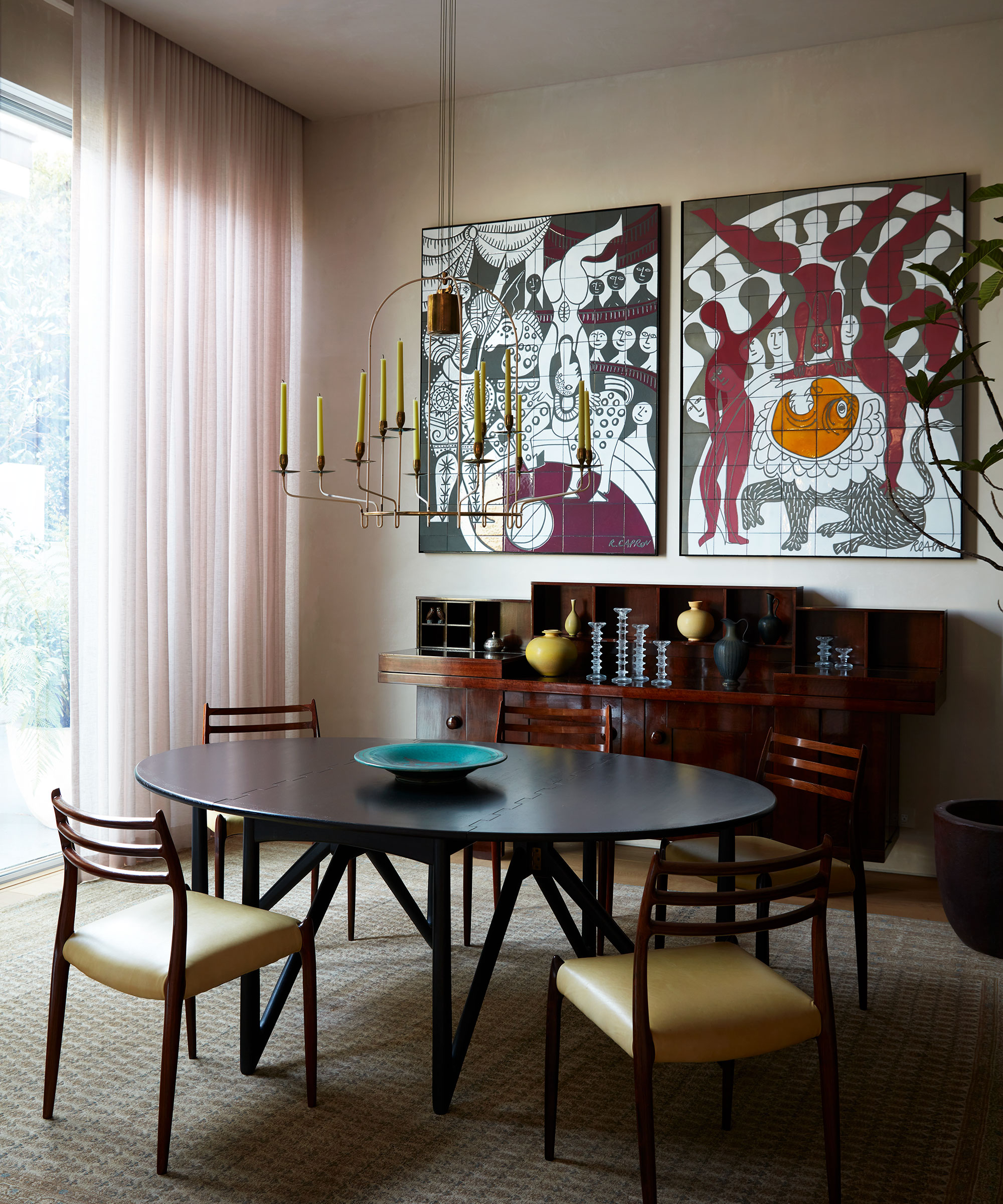
'I’m always looking for ideas on how to make walls interesting when my clients don’t have great art,' says Pamela Shamshiri. 'But if you want to combine modern art with retro furniture, look for a guiding "red thread" such a similar color or pattern.'
Here, the earthy browns work beautifully with, rather than against, the mid-century dining set. They don't fight each other for your attention, they work in harmony.
How do you decide what color combinations work will work beautifully? The best approach is to begin with what is already decided or what you can’t change. It might be a wood floor, a fireplace, or a favorite chair, for example. Then base your tonal choices on the color of these elements.
If you get the tonality right, you will then have a wide variety of colors that will work and so the choice comes down to personal preference or other elements of your scheme – like fabrics.
4. Pair contemporary curves with straight lines
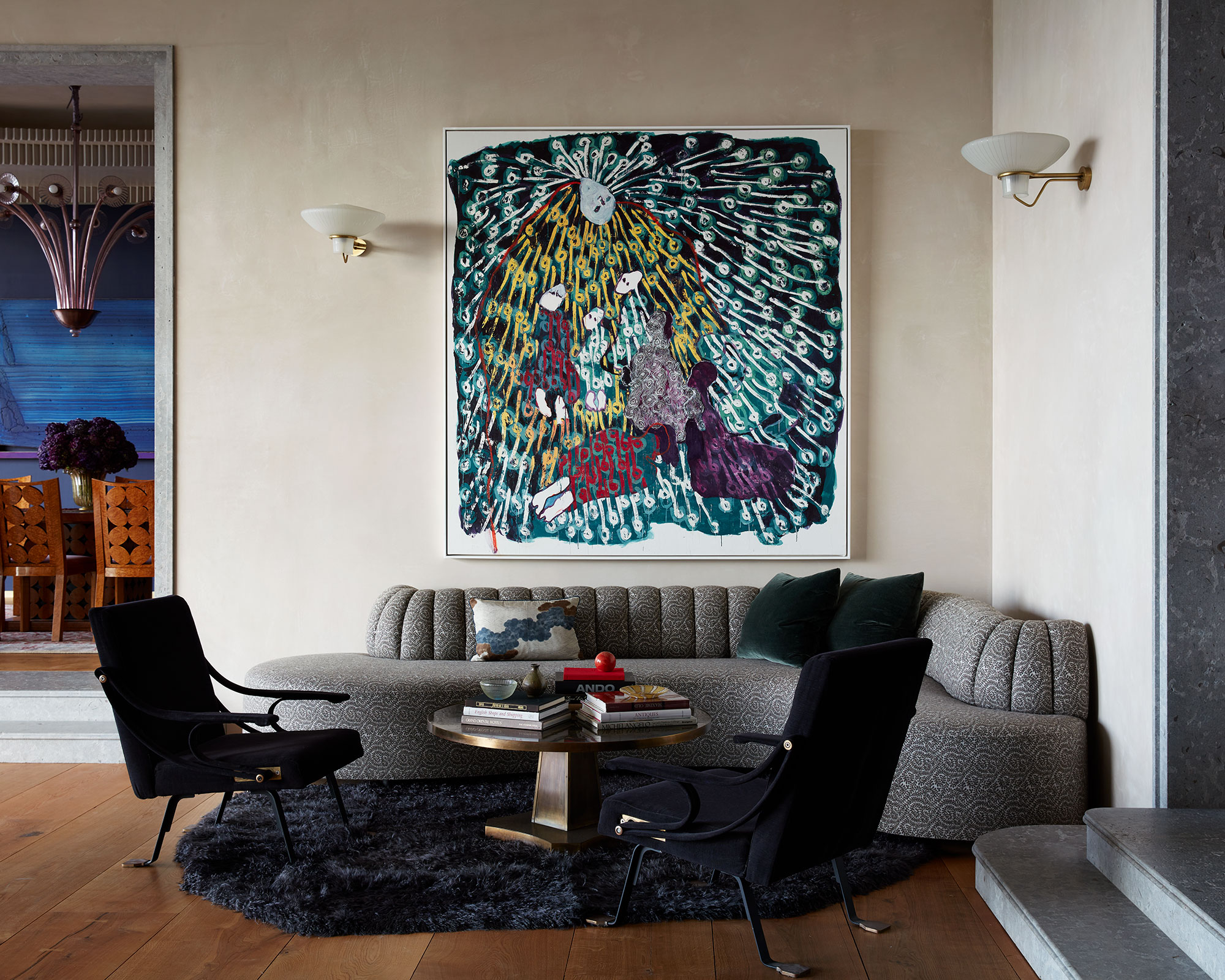
Well-built pieces, made to stand the test of time and that leads the way with iconic good looks are key factors for mid-century modern décor. But, at times, it is easy to see why this cold, streamlined style has been left in the past. So bring a classic mid-century look into the 21st century by pairing it with contemporary curves, a furniture trend that is both soft and inviting.
Full-on voluptuous or gently rounded, curves will lift the layout and soften the overall look of your room, adding a bold design focus or a subtle touch of shaping to your décor.
Curved furniture, especially sofas, and armchairs, will be popular for 2023/24– bringing a welcome softness to living spaces. These will be adorned in light colors and textured fabrics like shades of white and cream, with bouclé and velvet remaining a firm favorite.
Shop Studio Shamshiri's edit
Introduce an element of old-world nostalgia to your home with a 1960s Italian cabinet – perfect for the home office.







